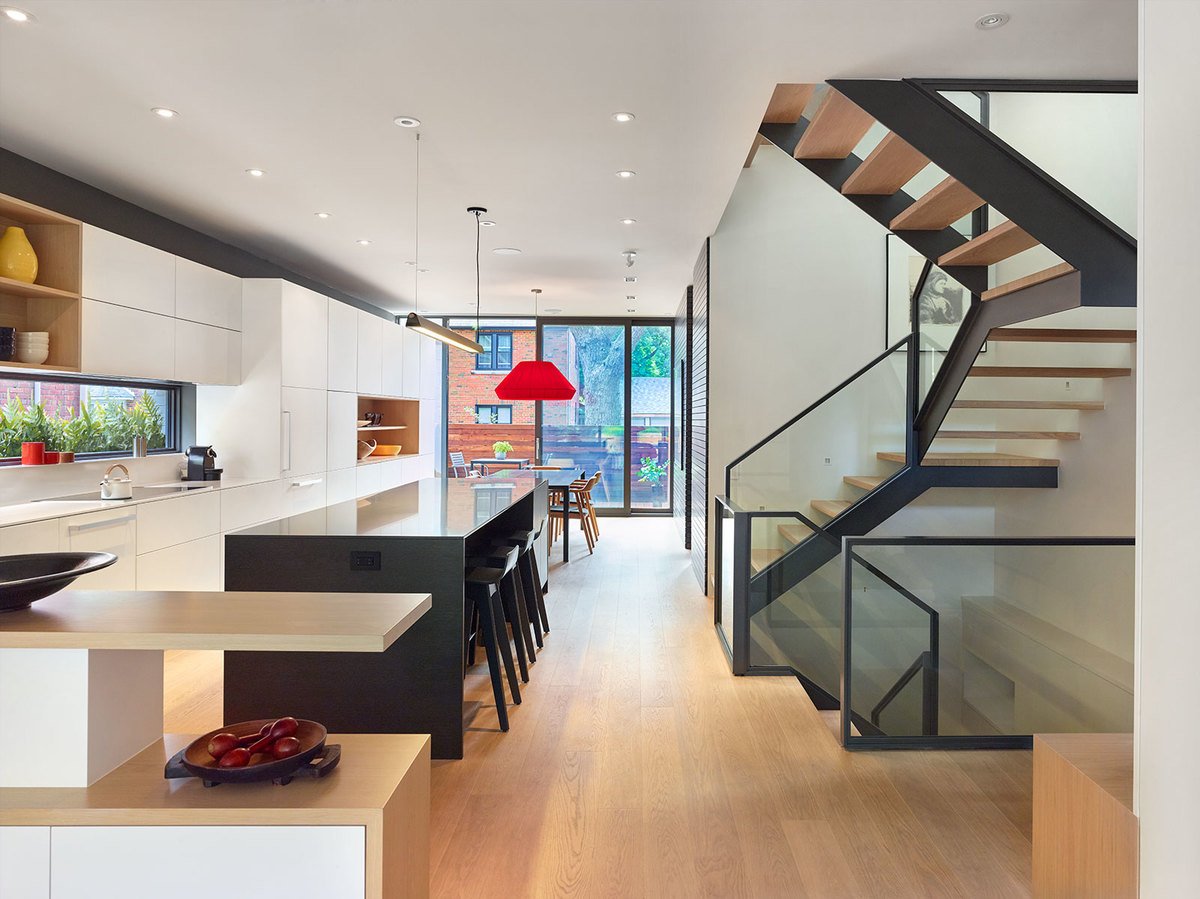CALIFORNIA HOUSE || Sustainable and Modern LA Mansion Hidden in the Hillside

The site was considered unbuildable.
But tell Peter Gluck that a site is rebuildable and he will set about to prove you wrong. This is exactly what the architect did, as he embarked on the 6-year project alongside none other than his son (and homeowner) Will Gluck, who is a writer, producer and director known for movies like Easy A, Friends with Benefits, Peter Rabbit, and Peter Rabbit 2.
The residence is designed with the top floor oriented for breathtaking views while the private quarters are essentially invisible on the lower floor.
Our favourite part of the residence is the entryway where a built-in bookcase shines a light on curated reading materials.
The site is spectacular, a steep north-facing hillside with unobstructed views of the mountains beyond and a 180-degree panorama from the Hollywood sign in the east to the Burbank airport in the west. Building on this site, long considered unbuildable, presented two challenges: first, to minimize the impact of the house on the landscape and second, to create a sufficient flat area to be comfortable for outdoor activities.
The solution bisects the building, each half with its distinct tectonic and programmatic function. The lower floor is carved into the hill and with its expanse of green roof, it creates a strong ground plane, or bench, in the steeply sloping land. Bedrooms, bathrooms, storage, media room and other family and utility spaces are arrayed along the hillside. This section, though large, is meant to be essentially invisible.
The floating staircase positioned next to the windows by the entrance receives natural light during the day and leads to the lower floor immersed in the hillside.
The lower floor is the private space where the media room and bedrooms are located.
The bedroom opens onto a garden to take in the view of the city below.
This invisibility contrasts with the strong sculptural form that the house presents to the viewer. A glass-sided pavilion creates a loft-like space for the communal activities of living, cooking, dining, entertaining, and so on. Everything here is configured to maintain the simplicity and openness of the space. Kitchen and spatial divisions never touch the ceiling so that it seems to float above independent steel supports. Three solid wood-faced “boxes” (the only interruption in the glass) contain “messy” program elements, including closets, fireplace, TV screen, pantry, kitchen office, and powder room, maintaining the integrity of the large space.
Glass-sided pavilion offers a spacious room for living, dining, and entertaining.
The elements never touch the ceiling so the structure seems to float on independent steel supports.
Like a vast parasol, the roof of the house is a rectangle with upturned edges that extend well beyond the footprint of the rectangular pavilion. The roof is twisted in relation to the glass rectangle, making it seem to float and creating shade in and outside the house. Depending on the time of day or season of the year, at one corner or another, there is always either shade or sunlight to be found.
In addition to resolving the two design issues, the team also managed to meet California’s exacting energy requirements. Over half the house is buried into the hillside to passively cool and heat the house. Large glass sliders on the upper level open on all sides for cross-ventilation, such that the house rarely requires mechanical air conditioning even at the height of summer. Solar panels hidden on the upturned roof produce more electricity than the house uses and a large cistern captures rainwater for landscape irrigation. Borrowed light also fills the heart of the lower level through the open stair leading down to the family media lounge and through ground skylights at the end of the primary suite corridor and bath.
California House is a project that offers both style and sustainability, so one can enjoy a modern abode without compromising the environment and natural surroundings.
The home is constructed for style and sustainability. The upturned roof with solar panels creates more energy than the home uses.
PROJECT DETAILS
PROJECT: California House
LOCATION: Hollywood Hills, Los Angeles, CA
SIZE: 7,500 SF, New Building, 2 stories
SITE AREA: 145,500 SF
YEAR: November 2019
PROJECT TEAM:
Architecture and Construction by GLUCK+
Austin Anderson
Ross Galloway
Peter Gluck
Matthew Harmon
Narin Hagopian
Gonzalo Moran
CONSULTANTS:
Civil and Structural Engineer
Peck
Geotechnical Engineer
Schick Geotechnical
Mechanical Engineer
IBC Engineering Services, Inc.
CES Engineering
Lighting Design
Lux Populi
Interior Design
Insight Environmental Design
Landscape Design
Hoerr Schaudt
Expeditor
Kimberlina Whettam and Associates
PHOTO CREDITS:
Here and Now Agency–Paul Vu





